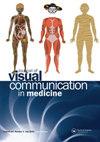Use of medical photography among dermatologists and plastic surgeons in Saudi Arabia
IF 0.7
Q4 RADIOLOGY, NUCLEAR MEDICINE & MEDICAL IMAGING
引用次数: 0
Abstract
Abstract This study aimed to evaluate the use of medical photography among dermatologists and plastic surgeons in Saudi Arabia. This cross-sectional study was conducted on 63 physicians (43 dermatologists, 20 plastic surgeons) using 36-item multiple choice questionnaire on the use of medical photography. Data were analysed using descriptive statistics, and two-tailed, Chi-square and Exact tests. Medical photography was used by most of dermatologists (90.7%) and plastic surgeons (95%). More than three-fourths of them agreed that medical photography aids in enhancing clinical effectiveness and standard of care. Photography was done mostly to track disease progression for dermatologists (87.2%), and for research and/or future publications for plastic surgeons (89.5%). The primary reason for exchange of photographs via email or text messages was for seeking second opinion and further recommendations from colleagues. Consent from patients before photographing was obtained by majority of both groups. Medical photography is commonly used both in clinical and academic practices for diagnostic, treatment and teaching purposes. Its value in enhancing medical care is agreed upon and the existence of workplace medical photography protocol is important. Consent from patients must be always acquired and stressed upon even with the absence of clear grounding regulations and protocols.沙特阿拉伯皮肤科医生和整形外科医生使用医学摄影
摘要本研究旨在评估沙特阿拉伯皮肤科医生和整形外科医生使用医学摄影的情况。本横断面研究对63名医生(43名皮肤科医生,20名整形外科医生)进行了36项关于医学摄影使用的多项选择问卷调查。数据分析采用描述性统计、双尾检验、卡方检验和精确检验。大多数皮肤科医生(90.7%)和整形外科医生(95%)使用医学摄影。超过四分之三的人认为,医疗摄影有助于提高临床疗效和护理标准。摄影主要用于皮肤科医生(87.2%)和整形外科医生(89.5%)的研究和/或未来出版物的追踪。通过电子邮件或短信交换照片的主要原因是寻求同事的第二意见和进一步的建议。两组在拍照前均获得了大多数患者的同意。医学摄影通常用于临床和学术实践的诊断,治疗和教学目的。它在加强医疗保健方面的价值是一致的,工作场所医疗摄影协议的存在是重要的。即使在缺乏明确的基础法规和方案的情况下,也必须始终获得和强调患者的同意。
本文章由计算机程序翻译,如有差异,请以英文原文为准。
求助全文
约1分钟内获得全文
求助全文
来源期刊

Journal of Visual Communication in Medicine
RADIOLOGY, NUCLEAR MEDICINE & MEDICAL IMAGING-
CiteScore
1.50
自引率
14.30%
发文量
34
期刊介绍:
The Journal is a quarterly, international, peer-reviewed journal that acts as a vehicle for the interchange of information and ideas in the production, manipulation, storage and transport of images for medical education, records and research.
 求助内容:
求助内容: 应助结果提醒方式:
应助结果提醒方式:


